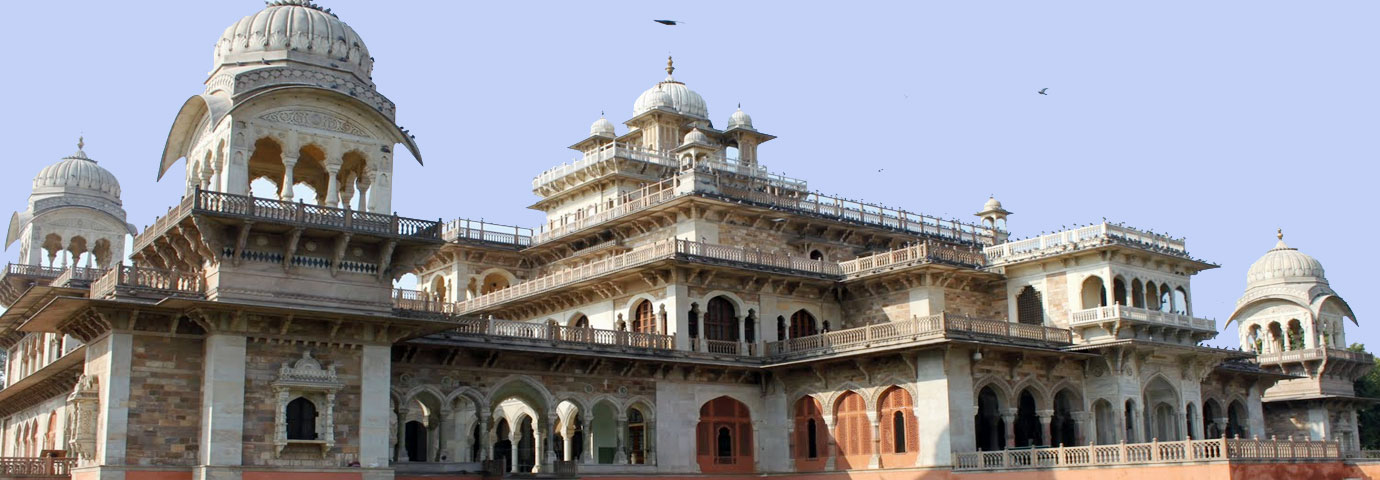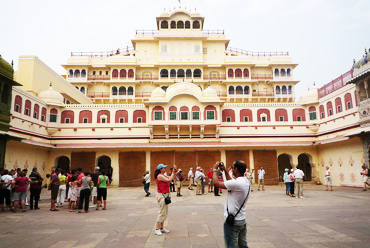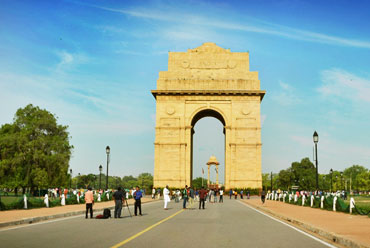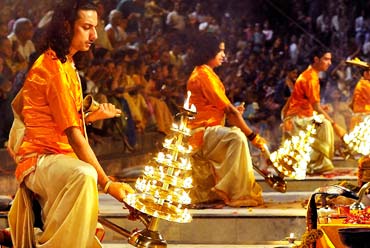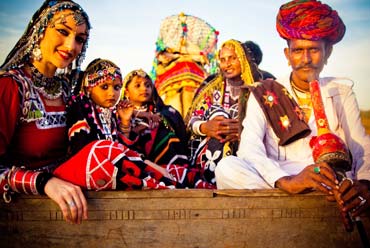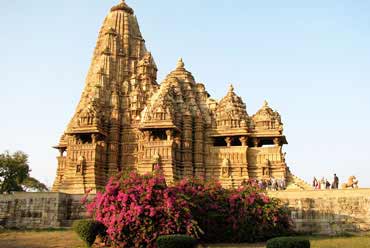The Pink City of Jaipur is known for being home to architectural wonders, one of which is the Albert Hall Museum, one of the most popular tourist attractions of the city. It was originally a concert hall that was erected way back in the year 1876. This splendid architecture is now a popular Museum of Jaipur, showcasing the objects and artifacts of the rich history of India and more. The museum is known not only for its exquisite collection but also for its wonderful architecture. The museum has 16 galleries in total and one gallery is declared ‘gallery of the month’. The museum has a design quite similar to the Victoria and Albert museum in London.
The foundation stone of Albert Hall was laid during the visit of the Prince of Wales to Jaipur in the year 1876. Till then, it was not determined what use the hall would be put to. Many suggestions were given to use it for cultural or educational use or as a town hall. In the year 1880, Maharaja Sawai Madho Singh II approved a suggestion by Dr. Thomas Holbein Hendley, Resident Surgeon to open it as a museum of Industrial Arts in order to display products of the local craftsmen.
Further, a small museum was setup in the year 1881, which turned out to be extremely popular. The reason behind setting it up as a museum was to tell people about the craftsmanship with handicrafts and art work. This not only made their craftsmanship popular, but also inspired them to improve their skills. Also, this made people protect and preserve their art in a proper manner. This provided employment to the artisans. Also, this helped in educating the youth in different fields.
In the year 1887, Albert Hall was completed by the architect Samuel Swinton Jacob, Director of Jaipur PWD.
Very soon, Albert Hall Museum became a centre for spreading historical knowledge of civilizations to inspiring artisans. The museum played a key role in improving the skills of the artisans and developing traditional Indian art.
Gallery Collection at Albert Hall Museum
Metal Art- Houses a vast collection of 19th century including salvers, vessels, rare salvers with zodiac signs, shields of Mahabharata, Ramayana and Ashwa-medh, brass, zinc and bronze figures etc.
Arms & Armour- Weapons used by Mughals, Rajputs, Iranians, Hyderabadis, Turkish and Arab soldiers including bows, arrows, spears, helmets, Tiger knives, swords, Karanshihi work in gold and silver, Arabic calligraphy and more.
Pottery- Exquisite collection of Indian pottery belonging to the 19th century, special Blue pottery of Jaipur, glazed pottery of Delhi, Multan and Sindh and unglazed collection from Hyderabad, Bikaner etc.
Sculptures-A fine collection of statues belonging to different centuries including a stone statue of Lord Shiva from the 8th century, a 4th century statue of a Yakshi, a Black stone sculpture of Chaturbhuj Vishnu and so on.
Miniature Paintings-There are miniature paintings on various themes from the Mewar School such as Malti Madhava, Panchtantra, Krishna Avtar Charitra, etc. Then there are Jain paintings on wood with lacquer, scenes from Ramayana, royal paintings, paintings from Jaipur School, Ragmala paintings and more.
Clay Art- A vast collection of clay figures from the 19th century including figures with range of Yogic postures, traditional masks, craft making activity, professional castes, sociological themes etc.
Marble Art- An exotic collection of Indian stone sculptures that earlier belonged to temples, sculptures carved by artisans, other idols including Nav Grahas, Lord Ganesh, Shiv Pariwar, Jain Tirthankars.
International Art- The museum also has a nice collection of International art such as Japanese dolls of the 19th century, Pharaonic antiquities 11th-1st century B.C, huge Nepalese brass Buddha, Egyptian Mummy belonging to 322-30 B.C, pottery etc.
Lvory- Interesting collection of Ivory statues such as Lady with a bird, Lady with a mirror, Man with a lotus, Cylindrical Medicine Box, Lor Shiva Statue, Dancing Lady and so on.
Jewellery- Showcases a collection of jewellery of the Royal family, elite class as well as peasants. There is a collection of expensive and inexpensive jewellery such as waist belts, rings, ear rings, bracelets, ear studs, foot ornaments etc.
Furniture & Wooden Art- Special furniture with wood carving from Kashmir and Jaipur. There are other wooden artifacts including door, almirah, drummer, elephant with mahawat, boar box etc
Coins- Coins belonging to different centuries such as 3rd century, 4th century, 11th century etc. Spot Mughal coins, Punch Marked Coin, Indian States Coin, Delhi Sultanate Coin, British India Coin- Gupta Dynasty coin etc.
Musical Instruments- The collection of antique Indian musical instruments such as Ravan Hatha, Chouteau, Karana, Masak,Bankia, Shehanai, Rabab can be spotted here.
Garments & Textiles- Spot different kinds of textiles and garments including Old Sanganeri prints, Kotadoria, Bandhish work, Gota work, embroidery, lace and so on.
Carpet- This gallery has an amazing collection of different kinds of carpets such as Circular carpet, Circular carpet with Mughal pattern, Old woolen carpet, Prayer mat with rectangular design, a small doormat and more.
Miscellaneous- This gallery is mizh-mash of everything and showcases several things such as Lacquered Country Cart, Kanishka Coin, raditional Male Attire, Male Dancing figure, Carved Wooden Door etc.

